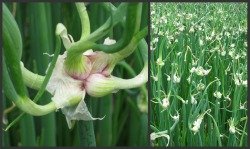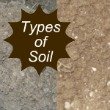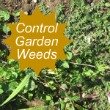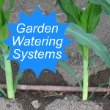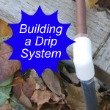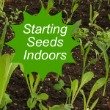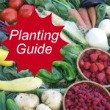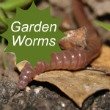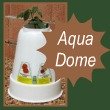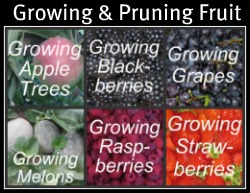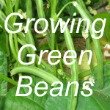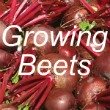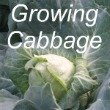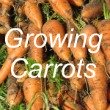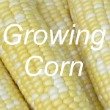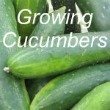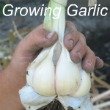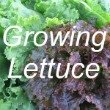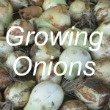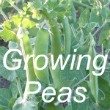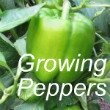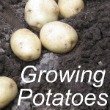|
Growing Cucumbers
Growing cucumbers are a great addition to your garden. You can put them in salads or just eat them plain. If you want to preserve your cucumbers for the winter you can make pickles and relishes.
Planting CucumbersCucumbers are a tender vegetable. Don’t plant them when there’s any chance of frost. See
Vegetable Planting Guide. 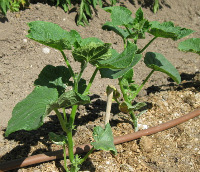
Remember when you plan your garden that growing cucumbers need room to spread. There are two types of cucumbers:
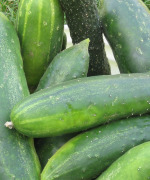 You may want to plant 2-3 different varieties of cucumbers. We really like the long English and Armenian cucumbers. They are crisp and firm and have a good flavor. Try a few different varieties to see which ones you like best.
You may want to plant 2-3 different varieties of cucumbers. We really like the long English and Armenian cucumbers. They are crisp and firm and have a good flavor. Try a few different varieties to see which ones you like best. Keep working on improving the quality of your garden soil each year by adding large amounts of organic matter to the soil. Before planting your cucumbers, add 16-16-16 fertilizer and elemental sulfur to the soil. Elemental sulfur is only used when you need to acidify alkaline soils. Rototill the fertilizers into the soil. Then rake the soil back to the center of the row. Smooth out the row before planting your cucumber seeds. See
Types of Soil. 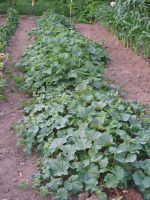
The cucumber seeds should be planted ½ – 1 inches deep and 10 – 12 inches apart. Cucumbers don’t need to be planted in hills. They can be planted in a row. Planting your cucumbers in a row uses your garden space more efficiently and makes it easier to water the growing cucumbers. The cucumber seeds need to be kept moist until they germinate and establish a good root system. If you spread a 1-inch layer of compost or manure over the newly planted seeds, it helps to keep the ground moist. You need to hand water your cucumbers until the seeds germinate and the little cucumber plants begin to grow. Then you can start using your
garden watering system.
Pollinating the Growing CucumbersFive to seven days after you plant your seeds, the primary leaves of the cucumber plants will start coming out of the ground. Once the root system gets established, cucumber vines will begin spreading over the ground. The plants will also start producing blossoms. Each cucumber plant has both male and female blossoms. It’s important to have bees around your garden area so they can pollinate the blossoms. If pollination doesn’t take place, you'll have beautiful plants but no cucumbers. My mother-in-law once had a cucumber patch that didn’t produce any cucumber fruit. She didn’t understand why. I would guess that one of the neighbors had sprayed their yard to kill insects. The bees were killed in the process. To help encourage bees into your garden, you can spread honey on some little boards. Place these honey boards in your cucumber patch. Fungus DiseaseCucumbers are susceptible to fungus diseases known as powdery and downy mildew. The fungus grows on the surface of the leaves and is caused by moisture on the leaves. For this and many other reasons, you should not use an overhead sprinkling system to water your growing cucumbers. The
drip system
is my favorite way to water cucumber plants. See
Garden Watering Systems.
Spotted or Striped Cucumber BeetleSometimes you may have a spotted or striped cucumber beetle that will feed on the plant. Spraying the cucumber plants with “sevin” easily controls this beetle. Remember that “sevin” controls chewing insects and “mathathion” controls sucking insects like aphids.
Harvesting CucumbersIf you’re planning to make pickles out of your cucumbers, they should be picked when they are 2-4 inches long. Cucumbers that you harvest for fresh eating should be picked when they are 6-8 inches long. You should pick your cucumbers every 2-3 days. They grow fast and can get very big if you don’t keep them picked. They don’t taste good when they’re too big. 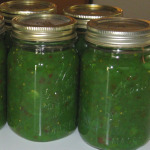
You can use your cucumbers to make many different kinds of pickles and relishes. The green cucumber relish is delicious on sandwiches. They make the sandwiches moist and tasty. When the cucumbers start producing, they turn out a lot of fruit. You can add them to a variety of fresh salads. You can also soak your cucumbers in vinegar for a few minutes before eating them. Or you can just eat plain cucumbers. They are delicious. Some people like to sprinkle a little salt on their cucumbers. 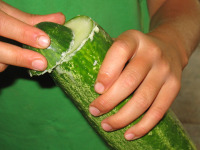
Once in a while, you’ll get a cucumber that has a bitter taste. Your larger cucumbers are more apt to be bitter. Cut one of the ends off the cucumber. Rub the cut end and cut cucumber together. White foam will start to come out of the cucumber. This process pulls out the bitterness. Enjoy! Return To: |






